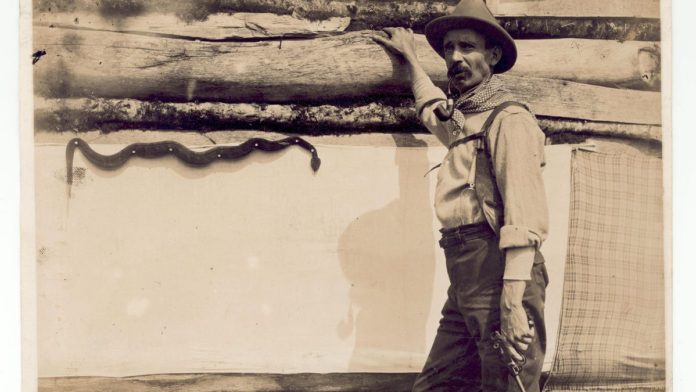In Bill Hart’s lifelong walking acquaintance with Great Smoky Mountains National Park — his book is titled “3,000 Miles in the Great Smokies” — he has come across many storytellers. One day, returning from a fishing trip on Eagle Creek, he and his friend Bob Foxx met Alvin Jenkins, a marina employee who ferried them across Fontana Lake.
“Unbeknownst to us,” Hart relates, “Mr. Jenkins was a natural storyteller.”
“Quill Rose,” one of Jenkins’ stories begins, “lived well up Eagle Creek in an isolated location … an ideal place to manufacture illegal white liquor.”
The tale then turns to Rose’s stature as a wilderness boss and to a woodland expedition he made with a friend.
As was the habit, Quill and his companion sought lodging at a cabin along the trail. That night, several young men staged a rough fight to intimidate the new guests.
“After the sham battle had raged for a few moments,” Hart records Jenkins saying, “Quill pulled out his long-barreled pistol and called to his friend: ‘John … let’s kill these SOBs before they hurt themselves.'” The fighting stopped.
Eagle Creek’s remoteness is a matter of record. To get there, writes Jim Casada in his authoritative guide, “Fly-Fishing in the Great Smoky Mountains National Park,” you have to make a hefty hike or engage a commercial shuttle service that operates out of the Fontana marina.
Casada conjures up an Eagle Creek father figure from a pre-Quill Rose time: Yonaguska, the Qualla Cherokee chief. On Eagle Creek, Yonaguska had a confrontation that changed his life and gave him a new name: “Drowning Bear.”
The figure of Quill Rose comes up for Casada, unavoidably. Casada describes him as taller than 6 feet, weighing 250 pounds, with steely blue eyes. In 1913, Horace Kephart confirmed Rose’s legacy in his now classic “Our Southern Highlanders.”
Quill, in Kephart’s offering, tells a biggest bear story, issues a prophetic warning about “power guns” and disdains the practice of aging whiskey. Once, when Kephart was accompanying a detective on a manhunt in the Sugarlands (called “Blockaders Glory”), Kephart tried to gain a cabin owner’s hospitality by telling him Quill Rose stories.
“Quill Rose!” the man exclaimed. “Why, I saw a picture of him … in a book” borrowed from “some furrin women (who) came in here and started a settlement house. … It was called ‘Our Southern Highlanders.'”
Rob Neufeld wrote the local history feature, “Visiting Our Past,” for the Citizen Times until his death in 2019. This column originally was published Sept. 16, 2009.
Credit: Source link































